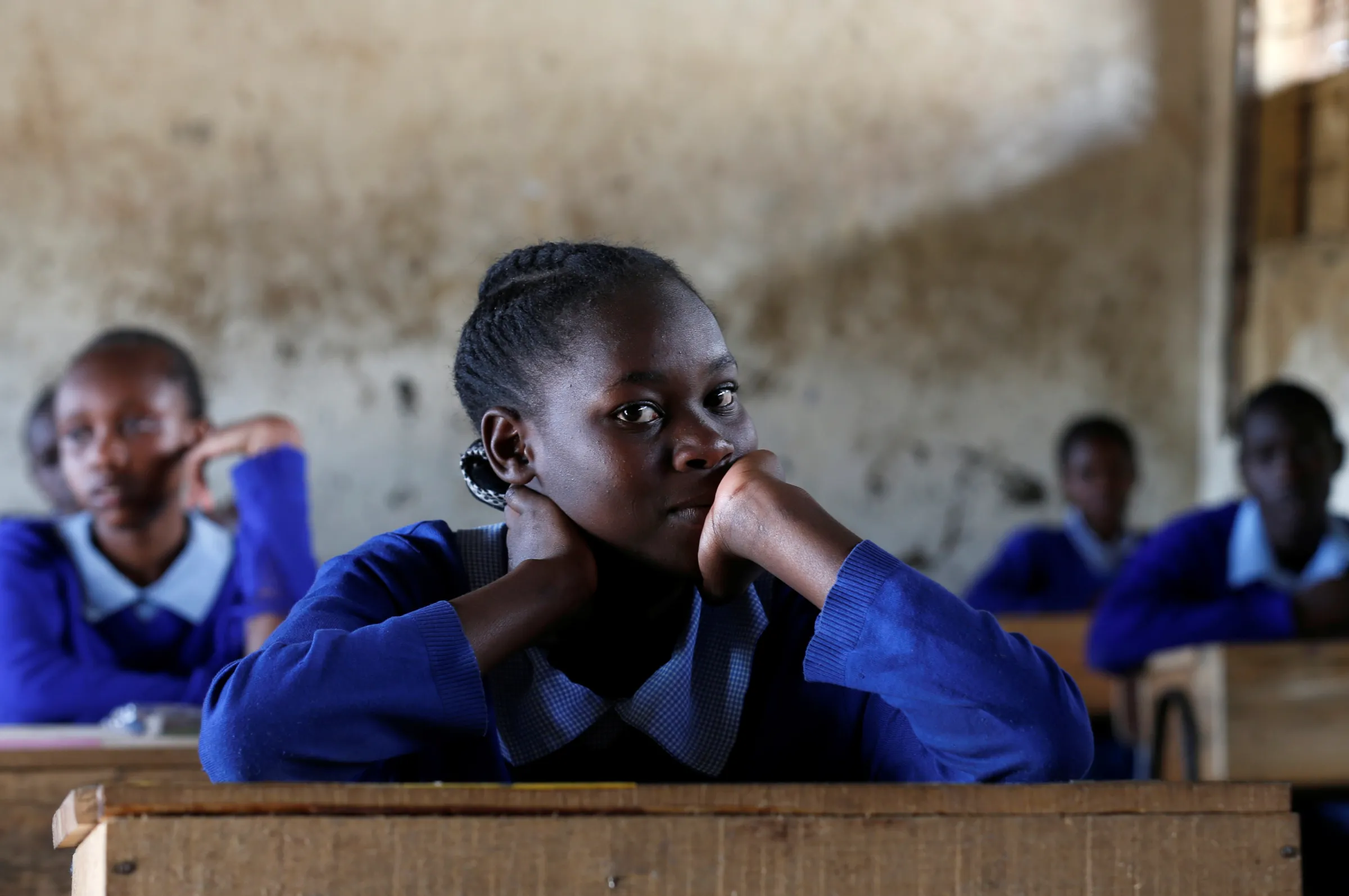The question is no longer if we need to connect every school - but how quickly we can get it done.
African students need fast internet: we have an answer

A pupil sits inside a classroom ahead of the primary school final national examinations at Kiboro Primary school along Juja road in Nairobi, Kenya October 31, 2017. REUTERS/Thomas Mukoya
Public-private partnerships can get African schools online quickly. It's not just about education: it’s also about economic growth.
Etleva Kadilli is Regional Director for UNICEF Eastern and Southern Africa.
With the fastest growing youth population in the world, Africa’s future depends on equipping the next generation with the skills to thrive in a digital economy. That starts with fast, affordable internet in schools.
The question is no longer if we need to connect every school - but how quickly we can get it done. Public-private partnerships offer the clearest path to scale, sustainability, and impact.
Connecting schools isn’t just about education - it’s about building economies.
Internet access enables students to develop digital skills, teachers to access better resources, and entire communities to benefit from improved services and to access the global economy.
The World Bank estimates that a 10% increase in broadband penetration can raise gross domestic product in low- and middle-income countries by an average of 1.38%.
Without connectivity, millions of young Africans risk being locked out of the digital economy, widening inequality and deepening youth unemployment.
So why are so many schools still offline?
In many countries, the core issue is price but some solutions are immediately available. Giga, a partnership between UNICEF and the International Telecommunication Union (ITU), is helping to drop those prices.
While this initiative is just starting, some results are already registering.
In Rwanda, with technical support from UNICEF, the monthly cost of school connectivity dropped from an average of $20 per megabit to as low as $9 – a 55% fall in some areas.
In Kenya, prices are also coming down, although precise numbers are still being assessed. UNICEF estimates that pooled procurement could reduce prices by at least 30% and as much as 90% across markets.
Closing the information gap matters too. When a company doesn’t understand the landscape, it prices in risk. That’s where initiatives like Giga play a vital role: by providing data and mapping, it increases transparency, reduces uncertainty, and helps to de-risk the investment. That, in turn, lowers the cost of connectivity.
A proven model
We’ve seen what’s possible. Take Gavi, the Vaccine Alliance: by bringing together governments, U.N. agencies, philanthropic groups and the private sector - with UNICEF as its key procurement partner - it helped vaccinate over a billion children at dramatically reduced prices.
UNICEF’s pooled procurement helped drive vaccine costs down and made large-scale, equitable delivery possible.
Giga applies a similar logic to school connectivity. Its mission is to connect every school to the internet by 2030.
In Africa, that means reaching approximately 500,000 schools in the next five years.
Its model rests on four pillars: mapping every school, designing smart financing, brokering affordable connectivity, and supporting countries to put digital learning tools to work.
Initial country-level pilots show what is possible now - and what could be possible with the right investment. In Kyrgyzstan, Giga’s real-time school mapping revealed that the government was paying for internet in schools that were offline - leading to a renegotiated contract that saved 40% of the education connectivity budget.
In Kenya, connected schools saw significant learning improvements. And in Colombia and Sudan, AI-powered mapping uncovered tens of thousands of schools missing from official records, helping transform national planning.
These examples show that with the right tools and partnerships, digital transformation in education is entirely within reach and more affordable than many think.
This isn’t just about infrastructure - it’s about giving every child the chance to learn in a connected world.
Why public-private partnerships are a game changer
Giga brings together governments, development banks, and the private sector under shared goals. One such collaboration is the Partnership for Digital Access in Africa (PDAA), a regional platform uniting the African Union, Smart Africa, the World Bank, and others to accelerate school connectivity at scale.
These partnerships do more than just fund projects - they reshape markets and policies to make connectivity faster, cheaper, and more sustainable. By pooling government demand across borders, standardising procurement, and sharing real-time data, they help bring better deals and unlock private sector investment at scale. It’s the same logic that powered Gavi: coordinated, cross-sector efforts that drive costs down and impact up.
Global development aid is under unprecedented strain, with rising demands and finite resources. Traditional models alone can’t bridge the digital divide. Public-private partnerships offer a smarter, more sustainable path, combining public leadership with private-sector innovation, technology, and capital.
This isn’t just about infrastructure - it’s about giving every child the chance to learn, to grow, and to thrive in a connected world.
We’ve already seen African governments step up. Now’s the time for donors, investors, and innovators to come together. Because if we get this right, we’re not just connecting schools - we’re opening doors for millions of children to a brighter, more equitable future.
Any views expressed in this opinion piece are those of the author and not of Context or the Thomson Reuters Foundation.
Tags
- Education
- Tech and inequality
- Tech solutions
Go Deeper
Related
Latest on Context
- 1
- 2
- 3
- 4
- 5
- 6
Most Read
- 1
- 2
- 3
- 4
- 5

















